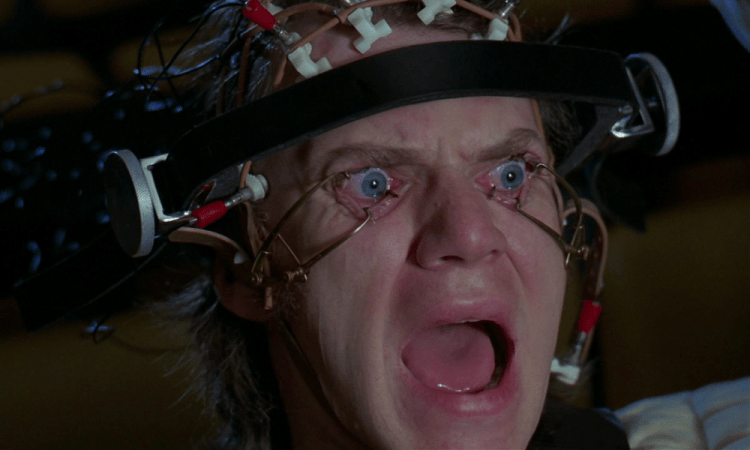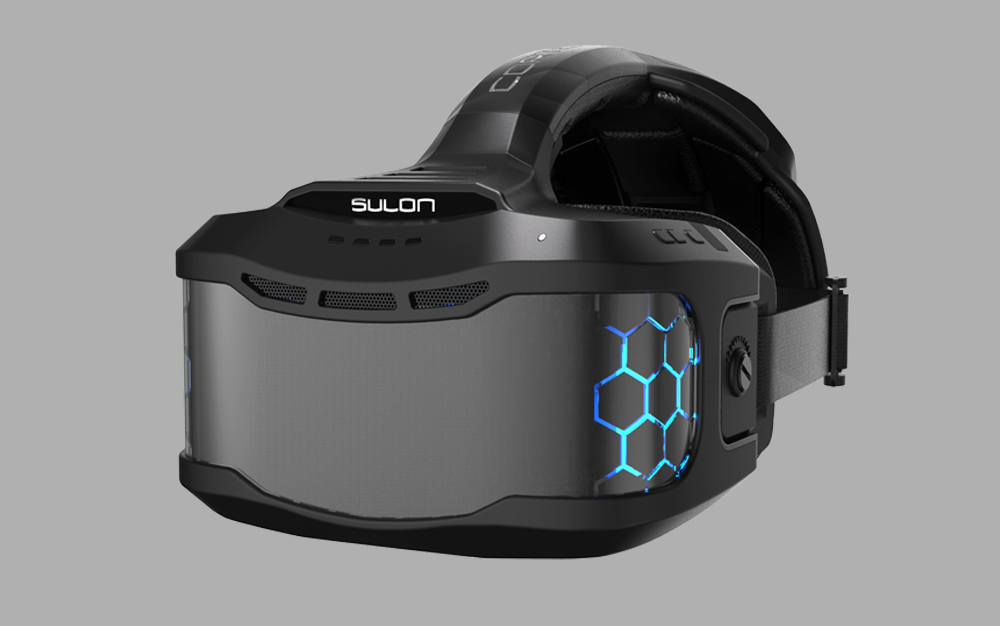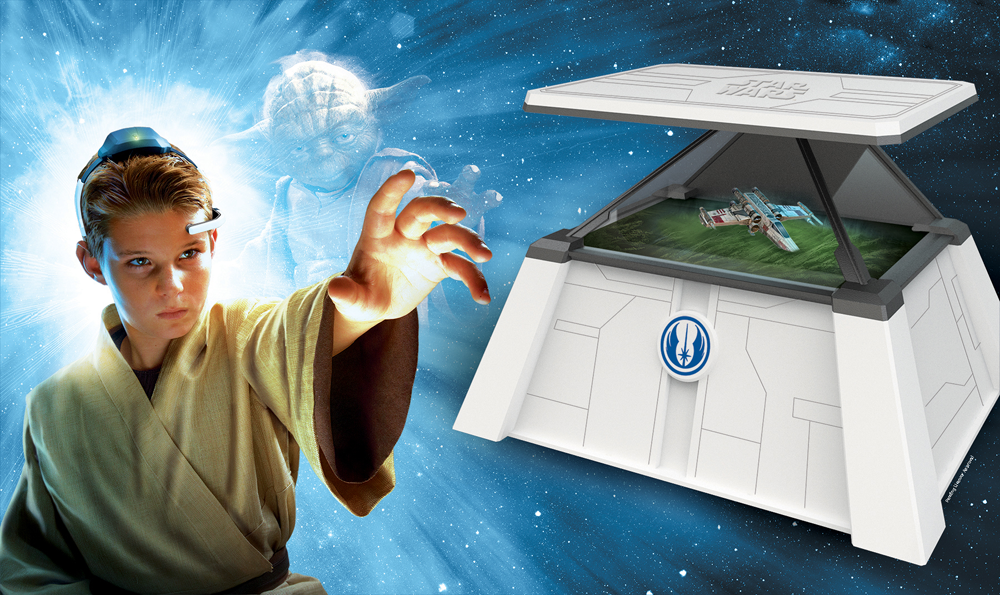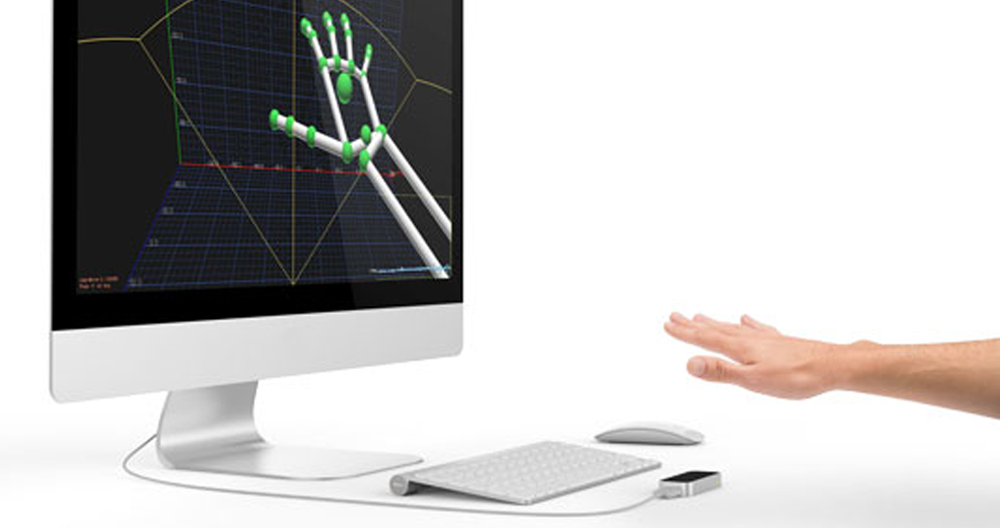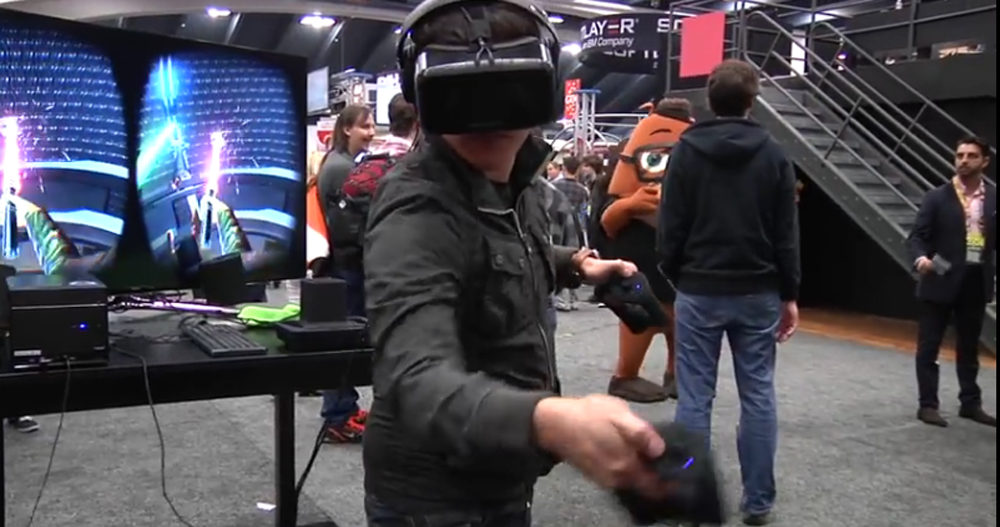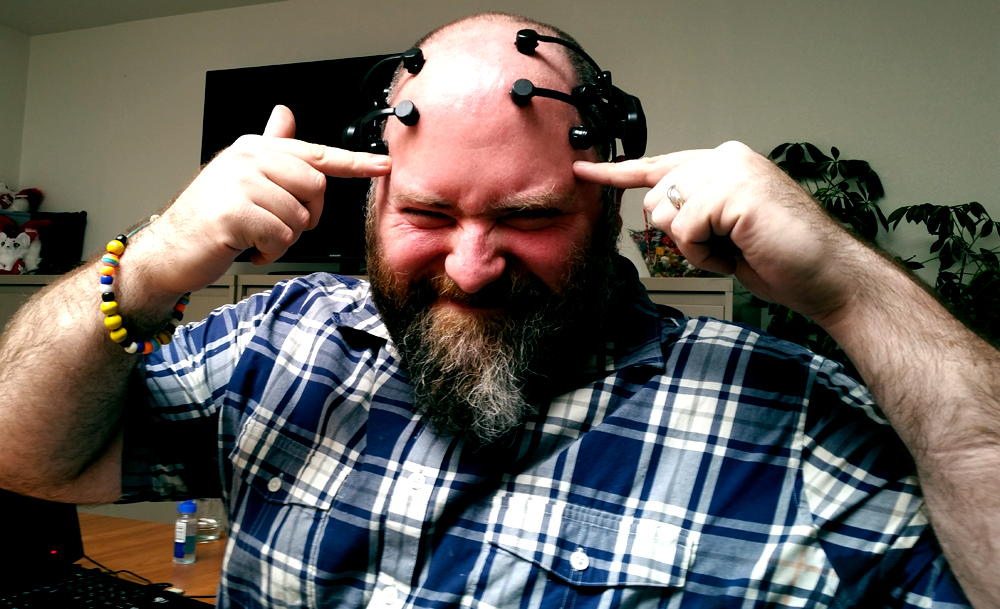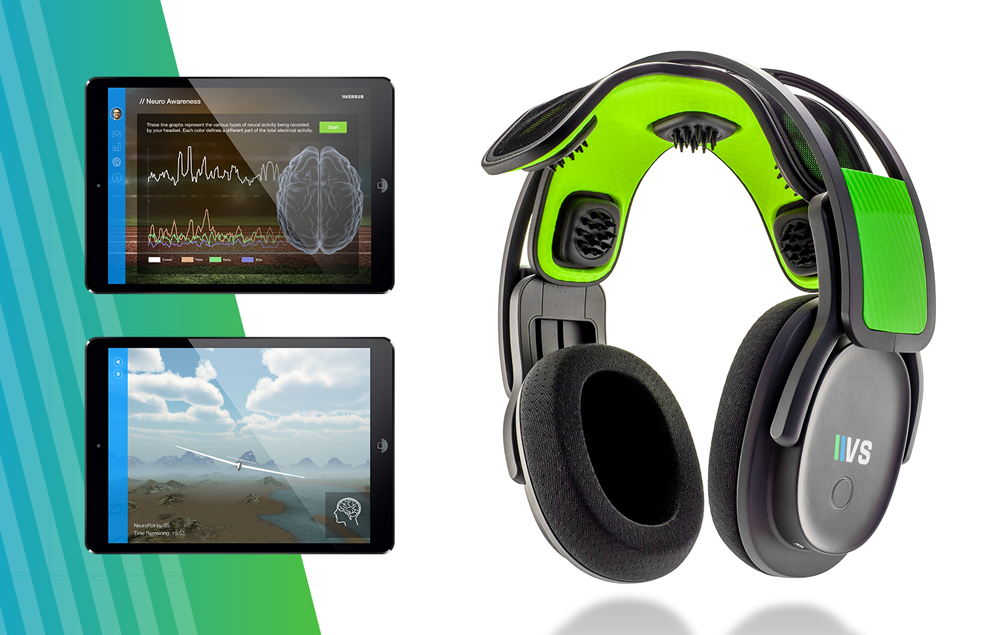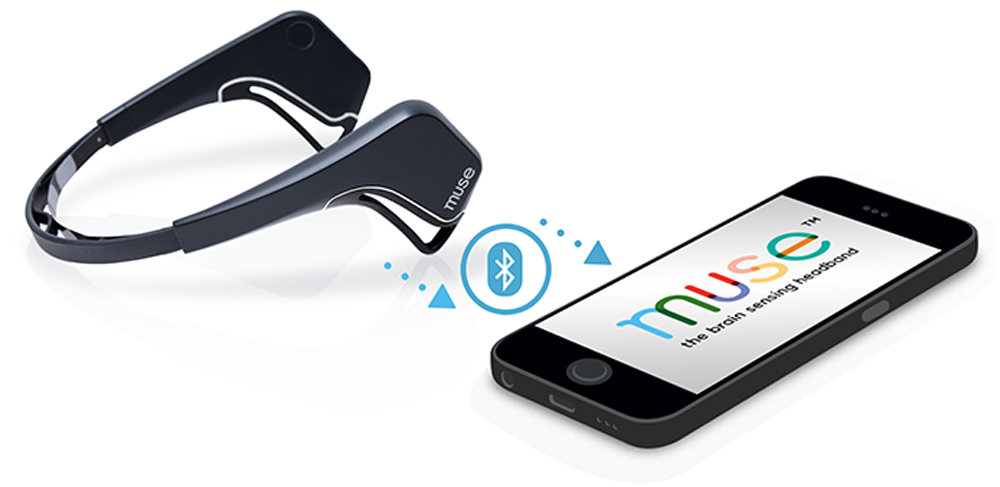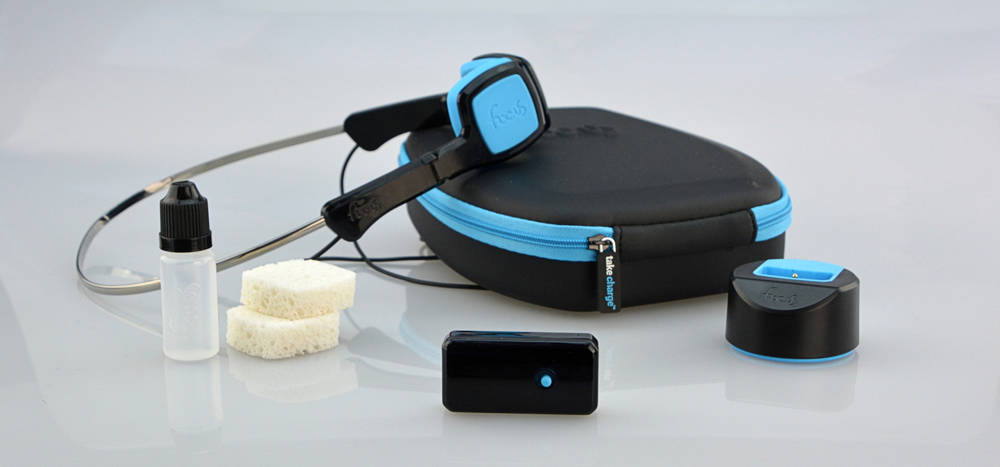After last week’s Neurogaming Conference in San Francisco, my brain feels like it’s been kneaded relentlessly by an onslaught of virtual reality hardware, brain scanning contraptions, and mind shocking probes.
The near-future of gaming, if that’s what we’re even going to call what I witnessed, is going to be awash with various reality-altering devices. We’ll find ourselves tethered to machines that can sense our mood in real time and manipulate our senses accordingly — and completely.
It’s a concept that is exhausting to think about, let alone experience several times over in the course of a day.
In order to reach this point of full immersion as a consumer product, we’re going to have to endure a couple cycles of strapping a lot of awkward devices to our bodies. Like a canary-in-a-cage, I lowered myself into the Neurogaming Conference’s pit of hardware or horrors. I emerged alive, but perhaps not unaltered….
Cortex AR/VR Headset
Company: Sulon Technologies
Availability: 2015
The leader of virtual reality headsets isn’t going to simply be a device that masters putting a high-definition screen comfortably close to your eyeballs. It’s going to eventually come down to the one that will enable designers to take advantage of multiple features. In this case, Sulon Technologies is pushing a headset that covers the hardware needs for both virtual reality and augmented reality.
The Cortex uses a high definition screen for the virtual reality display, then a set of cameras in the front panel that can show the user their perspective of the real world. On the back, a scanner records the user’s entire environment, allowing software to detect objects within the user’s immediate area and accurately manipulate those items in the virtual world.
During a conversation with Dhan Balachand, CEO of Sulon Technologies, he claimed that the unit is so successful at integrating these three elements of information input/output, that the Cortex can trick users into thinking they are walking a long straight path in virtual reality, while in the real world they are walking a circle repeatedly. Seeing as the Cortex was one of the only pieces of hardware at the show that was not available for demos, I remain somewhat skeptical about that claim. I’m eager for another meeting with Sulon Technologies, where I can hopefully experience the circle walking test.
Star Wars Force Trainer
Company: Uncle Milton
Availability: Late 2015 ($119)
This is actually an updated version to Uncle Milton’s previous Star Wars Force Trainer toy, which featured a ball inside of a plastic tube. With that version of the product, users put on a NeuroSky headset and, through focus, levitated the ball.
This new version is much more involved than a ball in a tube. This time the Star Wars Force Trainer features a holographic screen, which displays several different mini-games, again tied to a NeuroSky headset. Uncle Milton is claiming that the unit will launch with about ten games preloaded, but at the show there were only two available. One involved knocking droids over and the other required me to lift an X-Wing off the ground. Both exercises required me to use extreme focus, which wasn’t the easiest thing to keep going on a noisy show floor.
Leap Motion
Company: Leap Motion, Inc.
Availability: Now ($100)
One of the fundamental design problems with virtual reality is the challenge of solving basic input between the player and the experience. In traditional video games, the controller is the tool of choice when it comes to interaction. The thing is, that works great when the game is being displayed on a two dimensional screen. Virtual reality is something that physically surrounds the player. Interaction within that space being solely reliant on a controller can create a disconnect with the experience. Players need to feel like they can physically touch the objects with their body.
After a short demo of the Leap Motion hand tracking device, I am utterly convinced that this hardware should be the default control scheme of virtual reality. The device clips to the front of any virtual reality headset (in this case, an Oculus Rift). The Leap Motion then scans the area for the user’s hands. Once they are located, the unit’s software calibrates the hands position and skins a set of animation bones to a pair of 3D hands inside the virtual world. These hands then react exactly like the user’s real-world hands in real time.
I was grabbing polygons, smashing through walls, and flying through the air entirely with the power of my hands. No awkward gloves. No weird controllers. No bullshit. I was just waving my hands around and interacting with the imaginary objects in front of me, just like how all those ’90s movies promised virtual reality would be.
STEM System
Company: Sixense
Availability: Now ($299-579)
As much as I think the hands-free model that Leap Motion has adopted is how the baseline of virtual reality control should be handled, eventually we’re going to need something of substance in our hands. Or at the very least, something with a lot of input options. That’s where the Sixense’s STEM System comes in. It’s a five point motion control set up with two motion control hand grip/trigger controllers, two sensors that can be strapped to the shins, and a sensor for the head.
The software Sixense was using for their demo was a Star Wars light sabre exercise, where I could pick up two light sabres and deflect laser fire from a training droid. This is definitely an activity that required something of real world substance in the palm of my hand, and the weight of the two hand units was just right. It wasn’t so heavy that my arms were going to get tired waving them around for a few minutes, but they weren’t so light or fragile that I wouldn’t notice them. It also helped that the unit was completely wireless (except the Oculus Rift), so there wasn’t this sense of having every limb tethered to the machine. The STEM System is definitely going in a good direction when it comes to tackling virtual reality controllers.
Emotiv Insight and EPOC+
Company: Emotiv
Availability: Insight coming soon ($299), EPOC+ Available Now ($399)
You may remember the Emotiv EPOC EEG (electroencephalogram — it detects and scans the brain’s electrical impulses) reader from my first experience with neurogaming, where I was trying to master picking up rocks with my mind in Son of Nor. If you don’t, the short version is that this thing definitely does as advertised, sometimes frighteningly well.
Out of all the mind reading headsets I saw at the show, Emotiv’s EPOC seems to offer the widest range of signal scanning, using 14 channels to record electrical impulses of the brain.
The Insight EEG headset is a newer, sleeker, and slightly cheaper sibling of the EPOC. All features appear to be the same, except the number of channels drops to five (resulting in a physical design that no longer resembles a robotic spider resting on your cranium). If I ever look into exploring neurotech in my own game development adventures, Emotiv’s offerings would be some of the first units I’d look into, aside from the next offering.
NeuroSky Mindwave
Company: NeuroSky
Availability: Now. MindWave Mobile ($99), non-mobile ($79)
NeuroSky EEG units seemed to be the most popular headsets on the floor with neurogaming software developers. I’m not sure if that’s an indication of quality or if it is because these are one of the most affordable EEG units on the market.
The NeuroSky headsets don’t seem as all encompassing when it comes to scanning the brain as some of the other products, such as the Emotiv EPOC. There only seems to be one sensor that wraps around the forehead, I’m guessing to track the frontal lobe of the brain. Given the state of neurogaming development, maybe that’s all that needs to be scanned right now? It’s certainly good enough for tracking focus and relaxed states of the brain, which seems to be the extent most current brain related apps can handle.
Versus
Company: SenseLabs
Availability: Now ($399)
Versus was one of the more frightening looking headsets at the show, thanks to what look like brain piercing spikes on the unit’s sensor pads. Luckily, they didn’t seem to hurt so bad in actual use (unless they were designed to stab and kill the part of my brain that registers pain).
This is another EEG scanner, but instead of being an open developed piece of hardware, SenseLabs is tying it to a suite of brain improvement apps. As with all EEG based software of this type, most of the brain training exercises revolved around either relaxation or focus.
One of the glaring benefits of the Versus headset, which separates it from some of the others, is that it is wireless and it connects to an iOS device via bluetooth.
Muse
Company: Interaxon
Availability: Now ($299)
Similar to the Versus product, the Muse is an EEG reader that is being packaged more so with its own suite of brain training applications. Where Versus seems to specialize in exercising focus based thoughts, the Muse is geared towards relaxation.
The major app being demonstrated at the show was a meditation exercise, where a scene of a beach was laid out onto my mobile device. If my calm was disrupted by sudden distractions, the sound of wind would grow more violent. If I stayed relaxed and meditative, I would be rewarded with the splash of calm waves and the occasional seagull squawking by.
The headset itself was the most comfortable of the show. It slipped over my forehead naturally like a nice pair of glasses, as opposed to having something mechanical latching itself to my skull.
Foc.US Gamer Headset
Company: Foc.US
Availability: Now ($99)
Don’t let the name fool you, there’s nothing gaming related to the Foc.US Gamer Headset. It’s a pair of pads attached to a flexible wire headband that reminds me of old school walkman headphones. During a demo the representative hooked the pads up to my frontal lobes, then wired the other end to a widget that ran a program sending four different electrical signals to my brain: tDCS (a low frequency wave), tACS (a high frequency wave), tPCS (a sine curve between low and high frequency), and tRNS (a highly randomized frequency bouncing between low and high).
The representative was claiming that wearing the device for about twenty minutes a day would improve all sorts of mental abilities. Although there is information out there that suggests that sending these impulses to the brain can be a legitimate way to deal with some ailments (and even help those with serious injury), I don’t completely buy that this would level up my brain.
After a 4 minute session, which featured a slightly alarming minute where the lights in the room seemed to flicker, I felt more like my forehead was trying to sprout horns than a feeling of mental health. For the record, that horn sensation did not wear off until the next morning. Also on record, I did not sprout magnificent head bones. Did it improve anything brain wise? It raised my irritation, which I don’t think was an improvement. But, hey, I’m just a cog in the game industry machine — not an expert in neuroscience.
VentureBeat's mission is to be a digital town square for technical decision-makers to gain knowledge about transformative enterprise technology and transact. Learn More
